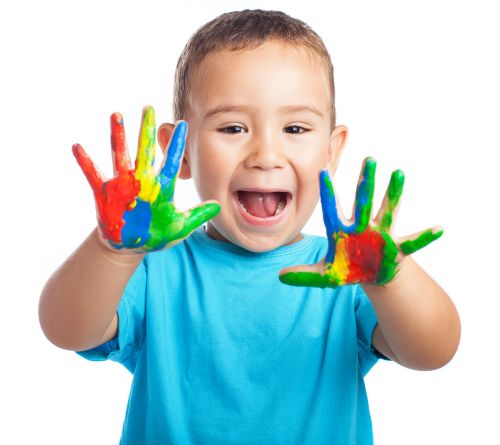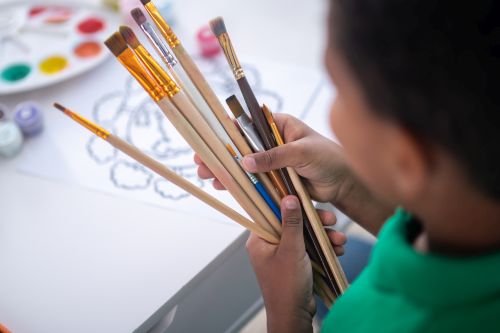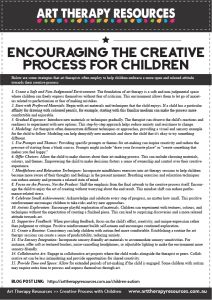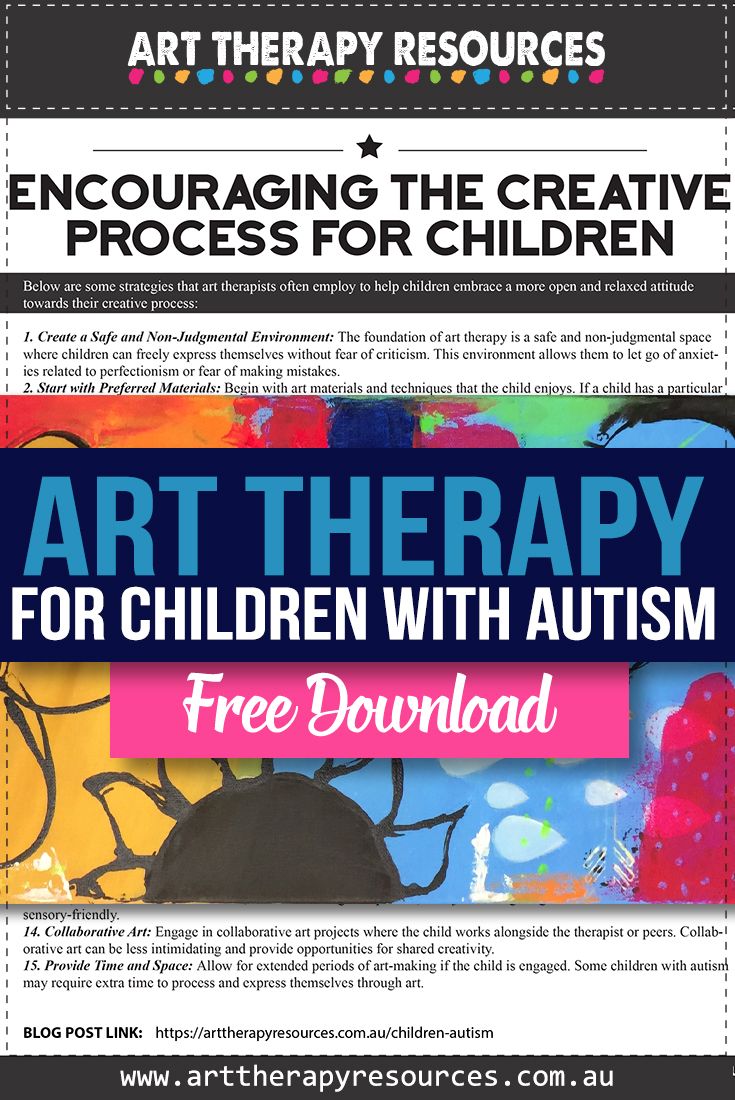THIS POST INCLUDES:
1. Art as a channel of communication
2. Communication and Imagination in Autism
3. Art Therapy as an Intervention
4. Overcoming Repetitive Behaviour in Creating Art
5. Encourage the Creative Process
6. Free Download
ART AS A CHANNEL OF COMMUNICATION

The application of art therapy for children with autism is not a new concept. Since the 1960s and 1970s, practitioners have made significant contributions to the educational and treatment programs designed for autistic children. As our understanding of autism deepens, so does our knowledge of effective forms of support and intervention. In this blog post, we explore how art therapy can benefit children with autism.
Creating art is inherently a communicative act, transcending the boundaries of language and offering a channel for expression. The universal language of art allows children to convey thoughts, emotions, and experiences that might otherwise remain locked within.
In the case of children with autism, who often grapple with the complexities of verbal communication, art becomes an invaluable means to bridge the gap between their inner worlds and the external environment. Through every stroke of the brush or choice of colours, they communicate without words, revealing their unique perspectives and emotions.
Art enables these children to tell their stories, share their joys and fears, and connect with others. Art provides a space where they can be heard, understood, and validated, even when traditional language fails them.
Moreover, the act of creating art is not just about producing a final masterpiece; it’s a journey of self-discovery and self-expression. It encourages children to explore their own thoughts and emotions, helping them better understand themselves and their place in the world. Through art, they can communicate not only with others but also with their inner selves, offering a path to self-identity and growth.
Some of the ways art therapy can assist within a non-verbal context includes:
- Bypassing Verbal Hurdles: For many individuals with autism, verbal communication can be a struggle. They may find it challenging to express complex emotions or thoughts through words. Art provides an alternative language, allowing them to communicate without the need for traditional verbal skills. Through drawings, paintings, or sculptures, they can convey their inner world with clarity and depth.
- Accessing the Unconscious: Art therapy taps into the unconscious mind. Often, emotions and memories reside in the subconscious, and these may not be readily accessible through verbal communication. Through the act of creating art, individuals can access and express these hidden aspects of themselves. This can be immensely therapeutic, as it allows them to confront and process unresolved issues.
- Reducing Anxiety: The non-verbal nature of art can be particularly beneficial for individuals with autism who may experience anxiety in social or verbal interactions. Engaging in art therapy can provide a sense of relief and safety, as they don’t need to rely on spoken words to convey their feelings. This can help build confidence and reduce stress.
- Enhancing Self-Expression: Art therapy encourages authentic self-expression. When individuals, including those with autism, don’t feel pressured to use words, they often produce more genuine and unfiltered expressions of themselves. This can lead to greater self-awareness and self-acceptance.
- Fostering Connection: Art can serve as a bridge between the individual and the therapist. The therapist can observe the artmaking and the final artwork, and subsequently gain insights into the client’s emotional state and experiences. This shared understanding can strengthen the therapeutic relationship and promote empathy.
- Personalized and Open-ended: Art therapy is highly adaptable and open-ended. Clients are free to choose their artistic medium and style, which empowers them to communicate in the way that feels most comfortable and natural to them. This personalization ensures that the therapy remains client-centered.
Imagination and creativity go hand in hand, forming the essence of artistic expression. When a child picks up a crayon or molds clay, they embark on a journey of endless possibilities. In this realm, a blank canvas becomes a portal to other worlds, and colours become the vocabulary of emotions. For children with autism, whose imaginative capacities may face unique challenges, this creative space is an invaluable gift.
Art therapy provides a safe and nurturing environment to exercise imagination. It encourages children to embrace their creativity and develop a sense of agency in their self-expression. Through art, they can construct narratives, dream, and invent, all while building bridges between their inner landscapes and the external world.
In this act of creation, children learn that their thoughts and ideas matter, fostering a sense of self-worth and empowerment. Art gives them a platform to manifest their unique visions, transcending any limitations imposed by their conditions.
Furthermore, the imaginative process in art promotes cognitive development. It encourages problem-solving, critical thinking, and the ability to envision new possibilities—a skill set that extends well beyond the art studio. For children with autism, this can be a pivotal step in their overall development, enhancing their capacity to navigate and interact with the world around them.
COMMUNICATION AND IMAGINATION IN AUTISM

Autism spectrum disorder (ASD) is often characterized by significant challenges in two fundamental areas: communication and imagination.
COMMUNICATION DEFICITS: Some examples of communication deficits are below:
- Verbal Communication: Many children with autism struggle with spoken language. They might have delayed speech development or exhibit echolalia, where they repeat words or phrases without understanding their meaning. Others may remain nonverbal throughout their lives. These difficulties in verbal communication can hinder their ability to express their needs, emotions, and thoughts effectively.
- Non-Verbal Communication: Autism can also affect non-verbal communication cues like eye contact, gestures, and facial expressions. Autistic children might find it challenging to understand or use these cues, making social interactions complex and often confusing.
- Idiosyncratic Language: Even when autistic children develop some level of language, it’s not uncommon for it to be idiosyncratic. They might use words in unusual ways or create their own language rules, making it difficult for others to understand them.
- Difficulty in Abstract Language: Abstract concepts, metaphors, and figurative language can be especially perplexing for autistic children. They tend to have a concrete thinking style, struggling to grasp abstract ideas.
IMAGINATION AND SYMBOLIC PLAY: Some examples of imagination challenges are below
- Lack of Pretend Play: Pretend or imaginative play is a critical developmental milestone for children. It involves using objects symbolically, like pretending a banana is a phone. Autistic children often exhibit limited or absent pretend play. Their play tends to be repetitive and focused on sensory experiences rather than imaginative scenarios.
- Difficulty with Symbolism: Understanding that one thing can symbolize another, a fundamental aspect of imagination, can be elusive for autistic children. This difficulty extends beyond play into other areas like reading comprehension and understanding metaphors.
- Rigidity and Repetition: Autism is often associated with rigid thinking patterns and a preference for sameness. This rigidity can restrict a child’s ability to explore new ideas or engage in imaginative activities.
These communication and imagination challenges can isolate autistic children from their peers and hinder their ability to engage in typical childhood activities. It’s important to note that the severity of these challenges varies widely among individuals with autism. While some may have mild communication difficulties and develop imaginative play skills, others may require intensive support.
Art therapy offers a unique avenue for addressing these challenges. By engaging in creative activities, autistic children can develop their communication skills, explore symbolic thinking, and gradually expand their imaginative capacities. Art therapists work with each child’s unique abilities and challenges to foster growth and development in these vital areas, ultimately enhancing their overall quality of life.
Autistic children often exhibit idiosyncratic language and repetitive behaviours as part of their neurodevelopmental profile. These traits are significant aspects of autism and can manifest in various ways:
IDIOSYNCRATIC LANGUAGE:
- Echolalia: involves repeating words or phrases they’ve heard, often without apparent understanding of their meaning.
- Scripted Language: Some autistic children rely heavily on scripted language such as memorized phrases or sentences that they use in specific situations.
- Neologisms: Autistic children may create their own words or phrases as a way of expressing themselves when conventional language falls short.
REPETITIVE BEHAVIOURS:
- Sensory Repetition: These might include activities like hand-flapping, rocking, or finger-flicking. These behaviours can be a way for autistic children to self-regulate and manage sensory overload.
- Routine and Ritual: Autistic children often thrive on routines and rituals. Changes to these routines can be distressing.
- Special Interests: Many autistic children have intense, specific interests that they pursue with great enthusiasm.
- Repetitive Play: Play for autistic children might involve activities like lining up objects, spinning wheels, or sorting items based on specific criteria.
These idiosyncratic language patterns and repetitive behaviours are not necessarily negative. They often serve important functions for autistic children, such as reducing anxiety, providing a sense of order and predictability, and facilitating communication. Understanding and respecting these behaviours is essential in supporting autistic individuals.
In art therapy, these idiosyncrasies can be valuable. Art offers a non-verbal outlet for self-expression, allowing autistic children to communicate in ways that feel comfortable and natural to them. Through creative activities, art therapists can encourage exploration and flexibility while still acknowledging and respecting the child’s unique language and behaviour patterns. Over time, art therapy can help broaden communication skills and reduce the need for rigid repetition, promoting growth and self-expression in a supportive environment.
ART THERAPY AS AN INTERVENTION

Art therapy holds significant promise for children with autism due to its unique capacity to address some of the core challenges associated with this neurodevelopmental disorder.
Below are several key reasons why art therapy is particularly well-suited for children with autism:
- Non-Verbal Communication: Art is a non-verbal form of expression. Many children with autism struggle with verbal communication, either due to limited language skills or difficulty with social communication. Art therapy provides an alternative, non-verbal avenue for them to convey their thoughts, emotions, and experiences. Through art, children can communicate in ways that feel more natural and less intimidating.
- Sensory Engagement: Autism often involves sensory sensitivities or sensory-seeking behaviours. Art therapy can be tailored to accommodate these sensory needs. Whether it’s the tactile experience of working with different art materials or the visual stimulation of colours and shapes, art engages multiple senses, providing a sensory-rich and soothing environment for children with autism.
- Flexibility and Individualization: Art therapy is highly adaptable and can be customized to meet the unique needs and interests of each child. Therapists can choose art materials and activities that resonate with the child, allowing them to explore and express themselves in a way that is comfortable and meaningful to them.
- Emotional Expression and Regulation: Children with autism often experience intense emotions but may struggle to express or regulate them verbally. Art therapy provides a safe space for emotional expression. Through art, children can externalize their feelings, gain insight into their emotions, and learn healthier ways to cope and communicate.
- Enhanced Self-Awareness: Creating art encourages self-reflection and self-awareness. For children with autism, this can be transformative. Through the art-making process, they can gain a deeper understanding of themselves, their preferences, and their sensory sensitivities, which can empower them to better navigate their world.
- Building Social Skills: Art therapy can be a social activity, fostering interaction with the therapist or peers. It provides opportunities for turn-taking, sharing, and collaboration, which are important social skills that children with autism often find challenging. Art therapy can help them practice and develop these skills in a supportive context.
- Reducing Anxiety and Stress: Engaging in creative activities can be inherently calming and therapeutic. Children with autism may experience anxiety in social situations or when faced with change. Art therapy offers a structured, predictable environment where they can relax, unwind, and manage stress.
- Supporting Imagination and Creativity: While some children with autism struggle with imaginative play and thinking, art therapy encourages creativity. It helps them move beyond rigid thinking patterns and explore imaginative concepts through visual expression.
OVERCOMING REPETITIVE BEHAVIOUR IN CREATING ART
Below are some aspects of how art therapy can be a transformative tool in breaking the cycle of repetitive behaviours:
- Introduction of Novel Materials: Art therapists often introduce a variety of art materials and techniques, encouraging children to explore new ways of creating art. This novelty can pique their interest and curiosity, diverting their focus from familiar, repetitive patterns. For instance, if a child has a habit of drawing the same object repeatedly, the therapist might introduce sculpting with clay or painting with watercolours to encourage experimentation.
- Sensory Engagement: Children with autism often have sensory sensitivities. Art therapy allows them to engage with different textures, colours, and materials, providing sensory experiences that can be both calming and stimulating. Exploring these sensations can gradually reduce the need for repetitive actions, as the child finds new avenues for sensory satisfaction.
- Encouraging Self-Expression: Repetitive behaviours in art-making can sometimes be an attempt to communicate or express something significant. Art therapists create a safe and non-judgmental environment where children can express their feelings, thoughts, and experiences through art. As children feel heard and understood, they may rely less on repetitive actions to convey their message.
- Building Confidence: The therapeutic process in art therapy focuses on the child’s strengths and abilities rather than limitations. As children experience success and gain confidence in their artistic endeavors, they may become more willing to experiment with new approaches and techniques, gradually reducing the need for repetition.
- Exploring Symbolism: Art therapists help children explore the symbolism in their artwork. When repetitive symbols or themes emerge, the therapist gently guides the child to reflect on their meaning. This can lead to insights about the underlying emotions or concerns driving the repetitive behaviours, encouraging the child to address these issues more directly.
- Supporting Emotional Regulation: Repetitive behaviours can sometimes be a way for children to self-soothe or cope with overwhelming emotions. Art therapy teaches children alternative ways to regulate their emotions through creative expression. This might involve creating art that represents their emotions or using art as a tool for mindfulness and relaxation.
- Social Interaction: Group art therapy sessions provide opportunities for social interaction and peer modeling. Interacting with peers can inspire children to try new approaches and techniques they observe in others, reducing the reliance on repetitive behaviours.
- Goal Setting and Progress Tracking: Art therapists often work with children to set goals for their art therapy sessions. Tracking progress and celebrating achievements can motivate children to move beyond repetitive behaviours as they see their artistic skills and creative repertoire expand.
- Gradual Shaping: Art therapists employ a gradual shaping approach, gently guiding children towards more diverse and expressive forms of art-making. This process respects the child’s individual pace and preferences while gently challenging them to explore new creative horizons.
ENCOURAGE THE CREATIVE PROCESS

Encouraging a freer and more relaxed approach to art, especially for children with autism, is a central goal in art therapy. Here are some strategies that art therapists often employ to help children embrace a more open and relaxed attitude towards their creative process:
- Create a Safe and Non-Judgmental Environment: The foundation of art therapy is a safe and non-judgmental space where children can freely express themselves without fear of criticism. This environment allows them to let go of anxieties related to perfectionism or fear of making mistakes.
- Start with Preferred Materials: Begin with art materials and techniques that the child enjoys. If a child has a particular affinity for drawing with coloured pencils, for example, starting with this familiar medium can make the process more comfortable and enjoyable.
- Gradual Exposure: Introduce new materials or techniques gradually. The therapist can observe the child’s reactions and readiness to experiment with new options. This step-by-step approach helps reduce anxiety and resistance to change.
- Modeling: Art therapists often demonstrate different techniques or approaches, providing a visual and sensory example for the child to follow. Modeling can help demystify new materials and show the child that it’s okay to try something different.
- Use Prompts and Themes: Providing specific prompts or themes for art-making can inspire creativity and reduce the pressure of starting from a blank canvas. Prompts might include “draw your favourite place” or “create something that makes you feel happy.”
- Offer Choices: Allow the child to make choices about their art-making process. This can include choosing materials, colours, and themes. Empowering the child to make decisions fosters a sense of ownership and control over their creative experience.
- Mindfulness and Relaxation Techniques: Incorporate mindfulness exercises into art therapy sessions to help children become more aware of their thoughts and feelings in the present moment. Breathing exercises and relaxation techniques can reduce anxiety and promote a relaxed state of mind.
- Focus on the Process, Not the Product: Shift the emphasis from the final artwork to the creative process itself. Encourage the child to enjoy the act of creating without worrying about the end result. This mindset shift can reduce performance-related stress.
- Celebrate Small Achievements: Acknowledge and celebrate every step of progress, no matter how small. This positive reinforcement encourages children to take risks and try new approaches.
- Artistic Exploration: Encourage playful exploration of materials. Children can experiment with textures, colours, and techniques without the expectation of creating a finished piece. This can lead to surprising discoveries and a more relaxed attitude towards art.
- Supportive Feedback: When providing feedback, focus on the child’s effort, creativity, and unique expression rather than judgment or critique. Positive reinforcement builds self-esteem and encourages continued exploration.
- Create a Routine: Consistency can help children with autism feel more comfortable. Establishing a routine for art therapy sessions can create a sense of predictability, reducing anxiety.
- Use Sensory Integration: Incorporate sensory-friendly art materials to accommodate sensory sensitivities. For instance, offer soft or textured brushes, noise-cancelling headphones, or adjustable lighting to make the environment more sensory-friendly.
- Collaborative Art: Engage in collaborative art projects where the child works alongside the therapist or peers. Collaborative art can be less intimidating and provide opportunities for shared creativity.
- Provide Time and Space: Allow for extended periods of art-making if the child is engaged. Some children with autism may require extra time to process and express themselves through art.
By employing these strategies, art therapists can help children with autism embrace a more relaxed and open approach to art, fostering creativity, self-expression, and personal growth in the process. Art therapy becomes a therapeutic journey of self-discovery, self-acceptance, and empowerment for these children, where they can express themselves freely and authentically.
The potential of art therapy to empower and support children with autism is profound and far-reaching. This therapeutic approach offers a unique and invaluable pathway for these children to navigate the complex challenges they face, particularly in the realms of communication and imagination.
Art therapy recognizes that creating art is inherently a communicative act. Through the process of making art, children with autism can express thoughts, feelings, and experiences that might be difficult to convey verbally. The act of translating internal thoughts and emotions into tangible visual forms allows them to communicate with depth and richness. This expressive outlet provides a powerful means of self-expression, enabling them to share their inner worlds with others.
Moreover, art therapy harnesses the inherent imagination and creativity within every child. It invites them to explore, experiment, and imagine without constraints. This is especially significant for children with autism, who often grapple with rigid thinking patterns and repetitive behaviours. Art therapy fosters an environment where they can break free from these constraints and engage in imaginative play, expanding their cognitive and emotional horizons.
FREE DOWNLOAD
SIGN UP below to gain access to our RESOURCE LIBRARY and download the FREE resource: Encouraging the Creative Process for Children

BUILD YOUR ART THERAPY REFERENCE MATERIALS:
Pin this image to your Pinterest board.

SHARE KNOWLEDGE & PASS IT ON:
If you’ve enjoyed this post, please share it on Facebook, Twitter, Pinterest. Thank you!
